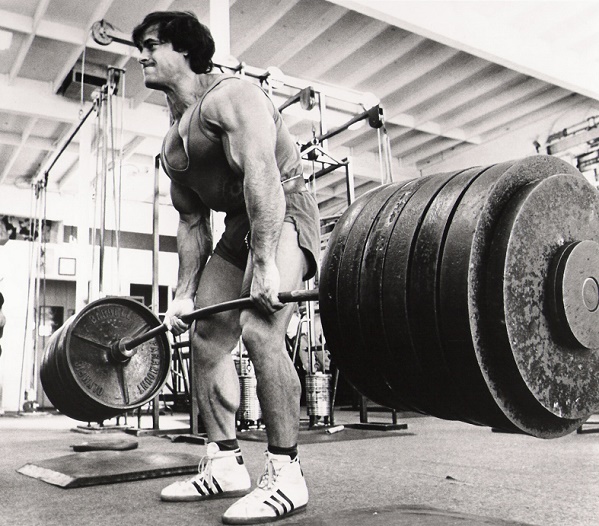How to Keep Getting Stronger

Franco Columbu used heavy weights for low reps to build maximum strength and muscle mass.
If you train with weights on a regular basis you'll know very well that muscles are built by progressively lifting more and more weight, called progressive overload. But the problem is you're only able to progress so much using this method. Your muscles will get stronger, but your tendon strength will be a limiting factor. This will cause "hitting the wall" and you'll stall out.
Bodybuilders who know what they're doing, then stop just adding more and more plates onto the bar, and rather "milk the weight." Making the exercise harder but not adding more weight. Fixed-weight progressive overload is very possible by simply making the reps harder by doing something like slow negatives or pauses to help you challenge your muscles a bit more with the same weight, then add more.
On paper training like this all makes a lot of sense, the muscles requires stimulation so that it will adapt (grow) by challenging the targeted muscle with overload. You add more weight as you start to get stronger. The problem is that this can't keep working obviously.
Let's say you "just" add 2lbs every week to your bench-press (a 1lbs increase on each side). After your first year you would've added 100lbs to your bench-press. That means if you've started out doing 225lbs bench-press you'd be lifting 725lbs within 5 years, or 1,225lbs after 10 years, etc. We all know it doesn't work like that however.
The answer is a limited linear progression that usually works, for 8-10 weeks. But unfortunately some weight training programs give you the illusion of long-term progress by starting you with weights that are simply too light with the first 4-6 weeks being too easy and not challenging your strength. So you'll progress for 16 weeks before you "hit the wall".
Weight training programs like this usually include de-loads or an easy week on every 4th week. The point is that even if it took you 20 to 24 weeks before you hit the wall, the problem is you'll be at exactly the same strength level as you'd have been after only 8-10 weeks using a more aggressive type of progressive resistance plan.
Before we list the compound movements you should do on a split training schedule, you should start of doing sets of 8 to 10 reps each. As the weight gets easier to lift don't increase the weight but rather use eccentric and pauses to improve the contraction BEFORE you decrease your reps down to 3 to 5 reps with an increased weight stack in the next 4-week block.
Bench press
Squat (front or back)
Military press
Chest-supported barbell row
Assistance Exercises
A typical sample split routine would look something like this:
Workout A:
Military press
Bench-press
Dips
Lying triceps extensions
Workout B:
Squats (front or back)
Chest-supported barbell rows
Romanian deadlift
Preacher curls
The first two movements should never change. But you can and should use any other exercise you please to replace the other ones hitting your weakest links. You then need to increase the weight you're lifting by 5% after 4 weeks for another 4 week cycle. You'll able to progress (get stonger and build muscle) for about 5 or 6 weeks before you "hit the wall".
Click Here for Free Anabolic Insider Magazine Subscription
Disclaimer: The information presented is intended to be used for educational purposes only. The statements made have not been evaluated by the Food and Drug Administration (U.S.). These products are not intended to diagnose, treat, cure or prevent any condition or disease. Please consult with your own physician or health care practitioner regarding any suggestions and recommendations made.
 Anabolics Mall
Anabolics Mall